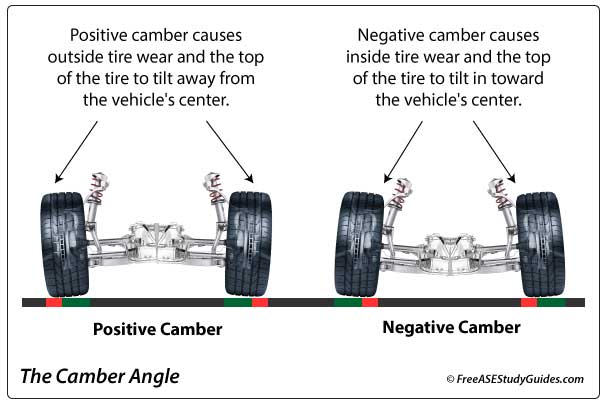ASE A4 Steering and Suspension Practice Test
46. Which of the following is true about lower control arms?
- A. They are located between the frame and the steering knuckle.
- B. Worn control arm bushings result in wheel shimmy.
- C. Torque the control arms to the frame with the vehicle raised and the air.
- D. Both A or B
47. The rear suspension of a light truck with rear leaf springs is noisy, and the left rear is sagging. Technician A says a broken leaf spring center bolt will result in this condition. Technician B says the sagging leaf spring will alter the truck's wheel alignment angles. Who is correct?
- A. Technician A
- B. Technician B
- C. Both A and B
- D. Neither A or B
48. The LEAST likely to result in memory steer is a binding:
- A. Ball joint.
- B. Steering gear.
- C. Upper strut mount.
- D. Wheel bearing.
49. The steering column squeaks while turning the steering wheel in either direction. All of the following components will result in a noisy steering column EXCEPT:
- A. The steering shaft universal joint.
- B. The clockspring.
- C. The steering column bearings.
- D. The horn switch.
50. A vehicle’s left front tire has excessive wear on its outside tread. Technician A says excessive positive caster has most likely caused this tire wear. Technician B says excessive positive camber results in outside tire wear. Who is correct?
- A. Technician A
- B. Technician B
- C. Both A and B
- D. Neither A or B
